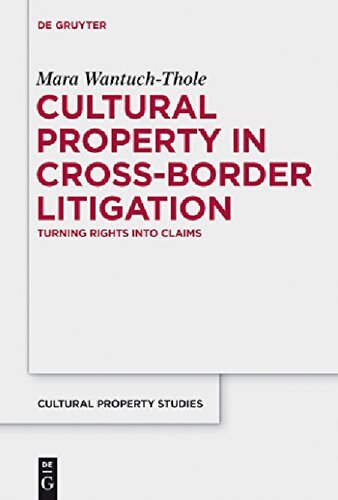

Most ebook files are in PDF format, so you can easily read them using various software such as Foxit Reader or directly on the Google Chrome browser.
Some ebook files are released by publishers in other formats such as .awz, .mobi, .epub, .fb2, etc. You may need to install specific software to read these formats on mobile/PC, such as Calibre.
Please read the tutorial at this link: https://ebookbell.com/faq
We offer FREE conversion to the popular formats you request; however, this may take some time. Therefore, right after payment, please email us, and we will try to provide the service as quickly as possible.
For some exceptional file formats or broken links (if any), please refrain from opening any disputes. Instead, email us first, and we will try to assist within a maximum of 6 hours.
EbookBell Team

4.4
12 reviewsThe legal discipline of cultural property law is a fairly young one compared to
the main areas of law practiced throughout the legal community. Owing to the
growing awareness of the value and meaning of art and cultural heritage for hu-
mankind, however, it is becoming a fast evolving subject with a constant flow of
new legislation being enacted both nationally and internationally. The monetary
value of art and archaeological artefacts has experienced an exponential growth
in the past three decades and so has the illegal market in such objects. The re-
cent conflicts in the Middle East have curbed the illicit trafficking in archaeolog-
ical objects from the region, where plunderers are said to control archaeological
sites and the export of cultural heritage.
Once however, art or cultural property has found its way onto the black mar-
ket, claims for its return to the original owner have proven to fail, notwithstanding
the vast body of domestic and international laws. Litigation is often complex, both
in terms of procedure and substance. I t involves a mix of domestic civil and crim-
inal law, European Human Rights and EU law, Private International Law as well a s
Public International Law. Successful litigation, however,would increase the aware-
ness of illegal dealings with such goods. Returns of movable antiquities to its
source countries could help diminish the destruction of archaeological context
caused by looting, if they succeed in serving as a deterrent to prospective purchas-
ers and thereby providing a disincentive to looters and illicit traffickers. In support
of this contention, this book upholds the view that the return of illegally excavated
and exported cultural objects i s an imperative based on legal argument.
The research consists of two parts.The first part comparatively delineates differ-
ent means of acquiring or retaining rights in cultural objects. They may be property
rights, interests that equal property or interests that do not count as property, but
serve as a mechanism to protect movable cultural heritage. The second part of the
thesis will be devoted to investigating and delineating ways to enforce interests i n
cultural objects and to turn such interests into claims.
The thesis that served as a breeding ground for this book has been admitted
as a PhD research project at King’s College London in 2007.The upgrade defense
took place in 2009.The project was further accepted as a doctoral thesis at Hum-
boldt University Berlin in 2010 and jointly supervised by Prof. Norman Palmer
and Prof. Stefan Grundmann. The defense took place at Humboldt University
in 2013. The main manuscript has been completed with the defense of the doc-
toral thesis, however, several amendments had to be undertaken until its actual
publication. This includes amongst others EU Regulation 1332/2013 concerning
restrictive measures in view of the situation in Syria, which was enacted as a re-
sult of the exponentially increasing illegal trafficking with Syrian cultural herit-
age following the intensification of political upheaval in the Middle East as well
as recent case law on the enforcement and justiciability of claims involving cul-
tural objects.